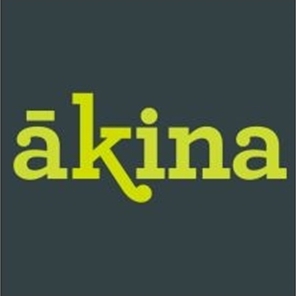Trump Tariffs Have Been Fool Of Surprises. What’s In The Cards For April 2nd?
- US trade policy is in the spotlight this week, with a slew of tariffs planned to come into effect on April 2nd. Investor sentiment has been fragile and markets volatile.
- The way we see things, global risks remain skewed to the downside for the Kiwi economy. And therefore, we see potential downside risk to interest rates and currency too.
- Our COTW takes a look at the latest monthly jobs data from Stats NZ. After some hefty declines over 2024, the pace of job losses continues to flatten out. We're slowly crawling out of recession, but it'll take time and more sustained demand before we see firms hiring again.
Here’s our take on current events
Data continues to confirm that the Kiwi economy's turnaround is unfolding as anticipated. The economy is past it’s low and set to gradually recover in the second half of this year. From PMIs popping into positive territory to healthy export earnings for the rural sector, greenshoots are emerging. The lift in activity however is limited to pockets of the economy, notably tourism and agriculture. And the pace is certainly not suggestive of a surge in activity. Essentially, conditions remain just right for the RBNZ to deliver two further 25bps cuts as signalled at their February meeting. And in our view, a third 25bp rate cut in the September quarter is need, ultimately to return the cash rate to neutral settings (~3%). The interim RBNZ Governor should be announced shortly, and shouldn’t change the outlook. Data to date pledge a strong case for further easing.
It’s becoming clear that there’s little in the way of domestic catalysts that could derail the Kiwi economy from this trajectory. But when thinking of the balance of risks, we still see risks as skewed to the downside for the economy. Risks, which are predominately coming from offshore.
We're increasingly concerned about the global backdrop. Between escalating geopolitical tensions and growing risk of geoeconomic fragmentation, the global outlook is shrouded in uncertainty. That’s not great for the Kiwi ‘small, open’ economy. While we’ve managed to stay off the Trump tariff country hit list (for now), the ramifications of an escalated trade war could hurt us significantly. Fears of a global growth slowdown are building given the level and scope of the tariffs proposed. And in that environment, demand for Kiwi exports will come under pressure. It certainly doesn’t help that our two key trading partners are at the forefront of the trade war. Such a scenario could stall the Kiwi economy’s expected recovery, requiring the RBNZ to push the cash rate below 3%. It is a scenario that’s certainly not outside the realms of possibility, yet one the market has not priced.
In our latest FX tactical “Wobbly confidence: We hit 55c on tariff turmoil. Now, where will the Kiwi go?” we discuss these risks further and the impact on rates and curreny. Our central scenario sees the Kiwi dollar remaining largely rangebound. Holding here at current levels before an eventual climb to 60c by the end of the year. But there’s certainly scope for the Kiwi to test its recent lows should we stray from our central scenario.
In any case, we’ll hear more on the tariff front this week. While unfortunately not part of the April fools’ festivities, April 2nd will be, according to Trump, “Liberation Day” for the US. We’re set to hear about Trump’s plan for reciprocal tariffs, along with an update on the on-again, off-again 25% tariffs on Mexico and Canada. Additionally, we’ll also see whether the newly announced 25% tariffs on autos, as well as the 25% tariffs on goods from any country that imports Venezuelan oil and gas will come into effect as promised last week. Markets already down on the news and expectations of what’s to come, are likely in for another burst of volatility. We’re watching this space very closely.
Charts of the Week: Job growth flattening at cycle lows.
As expected, the latest monthly filled jobs data was reflective of a labour market still hovering around the bottom of its cycle. Over February, Stats NZ’s filled jobs measure showed hiring was broadly flat over the month after January’s downwardly revised 0.1% lift. After falling 1.8% from its March 2024 peak, it seems the pace of job losses is truly flattening out now. The economy may have crawled its way out of recession at the end of last year, but for now at least, activity remains too weak to create jobs. It’s as we’d expect though. It’s not until the second half of this year that we expect a rebound in employment growth, given the lagged nature of the labour market.
By industry, there’s further evidence of the growing strength of the primary sector. Jobs growth within the primary sector outperformed the industries, with a 1% lift over February. Jobs growth across service industries was flat over the month, while goods-producing industries were down 0.3%. Undoubtedly weighed down by construction, filled jobs in goods-producing industries have averaged a 0.3% decline over the past three months.

Special Topic: A pivot to Euro.
Outisde of the all important Kiwi/USD, the recent performance of the Euro has caught the eyes of many. Increased European government spending at a time of USD weakness and uncertainty has seen the Euro push higher. And against the NZD has seen the Kiwi/Euro move to lower ranges. Here’s what our traders had to say;
“The Euro is the currency we have been watching the most of late. And at the moment, the Euro is giving the US dollar a bit of a run for its money. Eurozone developments that are a direct result of geopolitical and trade tensions, have seen Germany make some big concessions around their debt levels, and they have approved a huge EUR500billion spending package for infrastructure and defence spending. European equities have also been seen as a bit of a bargain compared with the relatively overpriced US equity market. As a result of all of this, the Euro has been trading higher against the US dollar. And the Euro makes up the biggest portion of the .DXY basket of currencies, meaning that it drags the US Dollar lower as it rises. The NZDEUR cross rate has shifted down a few notches, and we are now trading in the 0.5200-0.5350 range. There is further downside potential here of course, especially if we see the Eurozone cobble themselves together and work more effectively to shore up defence and trade strategies.” Mieneke Perniskie - Trader, Financial Markets.
And there’s more where that came from. For our take on other key Kiwi currency pairs be sure to check out our latest FX Tactical Wobbly confidence: We hit 55c on tariff turmoil. Now, where will the Kiwi go?


 Parrot Analytics: Netflix Earnings - Price Hikes With Minimal Churn | Will Netflix Be A Bright Spot For Markets?
Parrot Analytics: Netflix Earnings - Price Hikes With Minimal Churn | Will Netflix Be A Bright Spot For Markets? Canterbury Museum: Mystery Molars Lead To Discovery Of Giant Crayfish In Ancient Aotearoa New Zealand
Canterbury Museum: Mystery Molars Lead To Discovery Of Giant Crayfish In Ancient Aotearoa New Zealand Ngā Pae o te Māramatanga: Māori Concerns About Misuse Of Facial Recognition Technology Highlighted In Science
Ngā Pae o te Māramatanga: Māori Concerns About Misuse Of Facial Recognition Technology Highlighted In Science Retail NZ: Retailers Call For Flexibility On Easter Trading Hours
Retail NZ: Retailers Call For Flexibility On Easter Trading Hours WorkSafe NZ: Worker’s Six-Metre Fall Prompts Industry Call-Out
WorkSafe NZ: Worker’s Six-Metre Fall Prompts Industry Call-Out PSGR: Has MBIE Short-Circuited Good Process In Recent Government Reforms?
PSGR: Has MBIE Short-Circuited Good Process In Recent Government Reforms?



